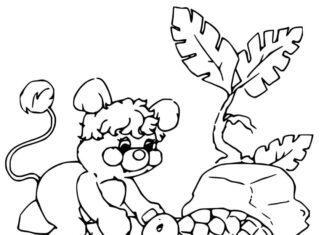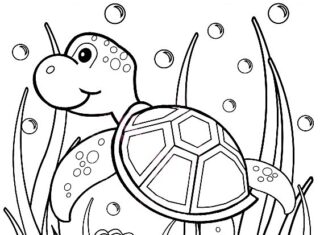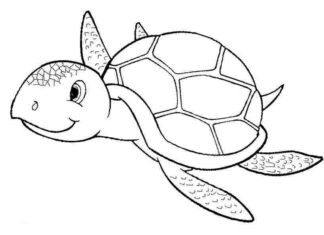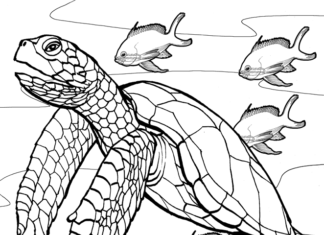Turtles are a group of reptiles of the order Tortoises (Testudines). They are characterized by the presence of a hard carapace that protects their body. Turtles are present all over the world and are found in a variety of environments, both aquatic and terrestrial.
Turtle Coloring Book
information
- Armor construction: Turtles have a hard armor consisting of two parts: an upper part, known as the carapace, and a lower part, known as the lobe. This armor is part of their skeleton and serves a protective function.
- Variety of sizes: Turtles come in a variety of sizes. Some species, such as the pond turtle, are relatively small, while others, such as the leatherback turtle, can reach impressive size.
- Siedliska: Turtles inhabit a wide variety of environments, including freshwater, seawater, forests, deserts and grassy plains. Depending on the species, their living habits may be adapted to a particular environment.
- Diet: The diet of turtles varies and depends on the species and environment. Most species are herbivorous, eating plants, leaves, fruits and other plant material. Some species are predatory and eat insects, small aquatic animals and fish.
- Life expectancy: Turtles can live a very long time. Some species, such as the giant tortoise, can live to be over 100 years old. Their longevity is often related to their slow metabolic rate.
- Reproduction: Most turtles are oviparous and lay their eggs on land. Females dig burrows or choose convenient places to lay their eggs. Warmth at hatching determines the sex of young turtles in some species.
- Armor protection: Turtles' armor protects them from predators and other threats. In some species, it can be observed that when threatened, they can hide in their armor, closing themselves off from the world with the help of their limbs and neck.
- Skin and respiration: Turtles' skin is covered with scales and has different colors and patterns. Unlike other reptiles, they do not breathe through their skin, but through their lungs. Some aquatic species may exhibit the ability to breathe through their skin underwater.
- Threats: Many turtles are threatened by habitat loss, hunting and trading for carapace and meat. In some regions, they are also victims of road accidents.
- Culture and symbolism: Turtles are present in the mythologies and cultures of various communities around the world. They often symbolize longevity, wisdom, stability or balance
trivia
- Slow pace of life: Turtles are known for their slow pace of life. Their metabolism is very slow, which contributes to their longevity. Some species can live longer than many other animals.
- Speed of movement: Most turtles move slowly, but some species, such as the leatherback turtle, can be relatively fast on land and in water. They can reach speeds of about 10 km/h on land and up to 35 km/h in water.
- Sound and communication: Although turtles do not normally make sounds, some species can produce various noises, such as hisses or thumps. These sounds are used to communicate with each other or as a response to danger.
- Mimicry and camouflage: Many turtle species have skin color and patterns that allow them to effectively camouflage themselves in their surroundings. This can help them avoid predators or hide from prey.
- Turtles in water and on land: Some species are more aquatic, others more terrestrial, and some spend a lot of time in both water and on land. Their anatomy and behavior are adapted to specific environments.
- Invertebrates on a diet: Some species of turtles, such as the pebble turtle, are predators and feed primarily on invertebrates such as insects and mollusks.
- The egg as a sex determinant: For some turtle species, the temperature at hatching determines the sex of the young. A higher temperature can lead to females hatching, while a lower temperature can lead to males hatching.
- Immersion capability: Most turtles can submerge underwater, but the amount of time they can spend underwater varies by species. Some species are known for their long underwater migrations.
- Symbiosis with other animals: Some turtle species, such as the green turtle, can live in symbiosis with other organisms. For example, fish or other organisms can clean the turtle's carapace of algae and parasites.
- Sea turtles and migrations: Sea turtles are impressive migrators. Some species travel hundreds of kilometers to return to the places where they lay their eggs. Their migrations are often a mystery to scientists and a fascinating phenomenon to observers.






